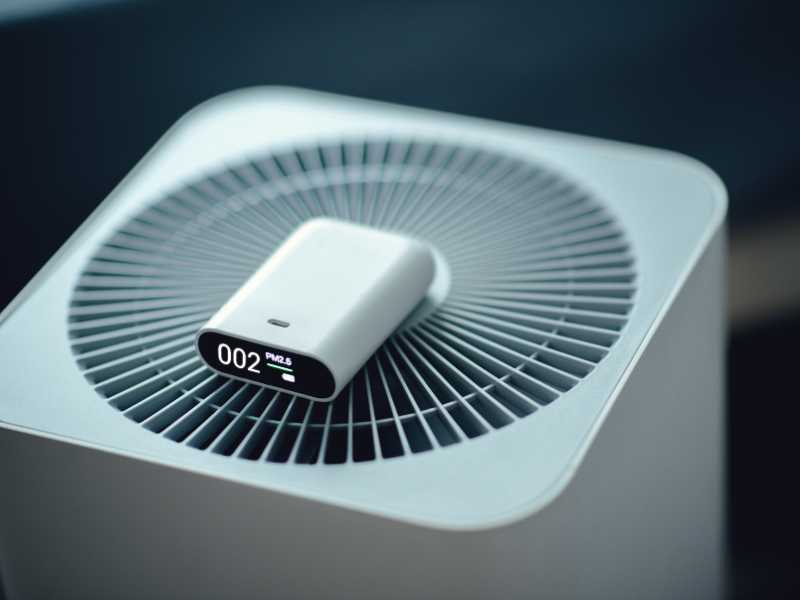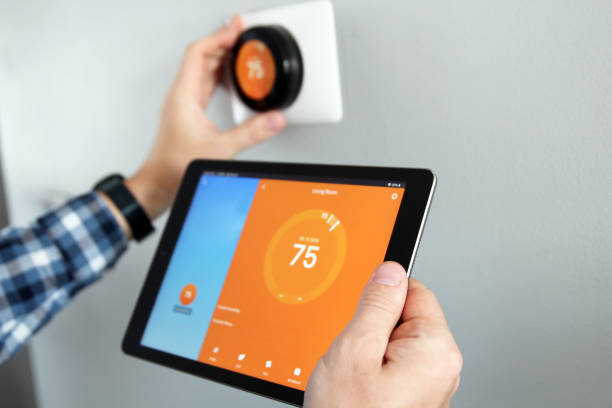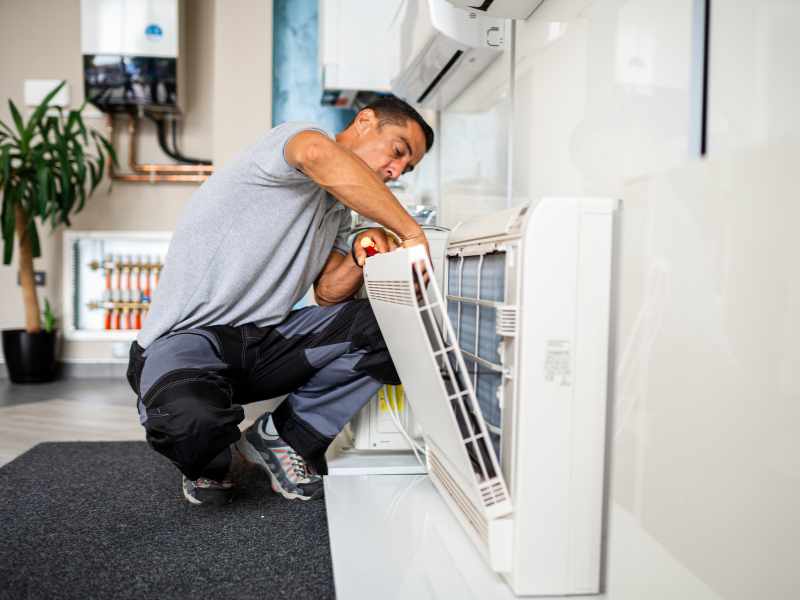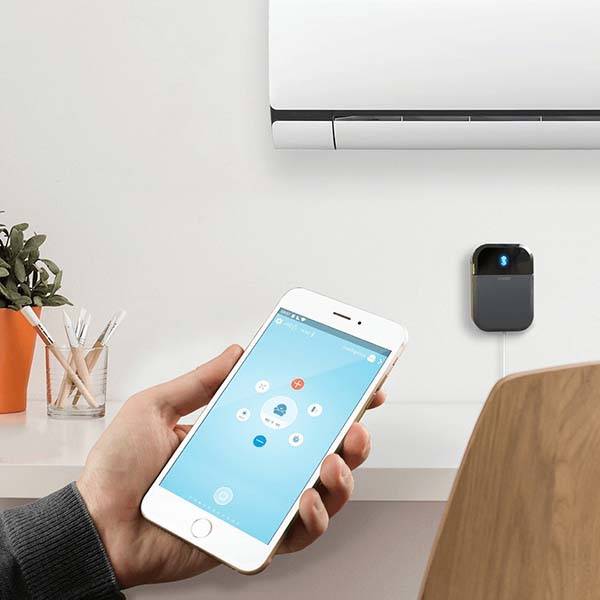What Makes HVAC Systems Eco-Friendly and Energy Efficient?
As energy costs rise and environmental concerns intensify, homeowners are seeking sustainable heating and cooling solutions. Eco-friendly HVAC systems combine environmental responsibility with cost savings, reducing carbon footprints while cutting energy bills by up to 50%. Understanding what makes HVAC systems eco-friendly helps you make informed decisions that benefit both your wallet and the planet.
Understanding Eco-Friendly HVAC Systems
Eco-friendly HVAC systems prioritize renewable energy sources, advanced efficiency ratings, and environmentally responsible refrigerants. Key characteristics include:
- High energy efficiency ratings (SEER2, HSPF2, and AFUE)
- Renewable energy integration through solar or geothermal systems
- Environmentally safe refrigerants like R-410A with a lower global warming potential
- Smart technology integration, including smart thermostats for optimized energy management
- Advanced filtration systems are improving indoor air quality
According to the U.S. Department of Energy, upgrading to high-efficiency equipment can reduce energy consumption by up to 50%.
Key Energy Efficiency Ratings for Eco-Friendly HVAC Systems
SEER2 Ratings
The Seasonal Energy Efficiency Ratio 2 measures cooling efficiency. Modern eco-friendly HVAC systems feature SEER2 ratings between 14 and 23, with higher numbers indicating greater efficiency.
| SEER2 Rating | Efficiency Level | Energy Savings |
| 14-16 | Standard Efficiency | 15-20% savings |
| 17-19 | High Efficiency | 30-40% savings |
| 20+ | Premium Efficiency | 45-50% savings |
HSPF2 Ratings
The Heating Seasonal Performance Factor 2 measures heat pump heating efficiency. An eco-friendly HVAC heat pump should have an HSPF2 rating of at least 8.0, with premium models achieving 10 or higher.
AFUE Ratings
Annual Fuel Utilization Efficiency measures furnace effectiveness. Modern eco-friendly HVAC furnaces should have AFUE ratings of at least 90%.
Top Eco-Friendly HVAC Technologies

Geothermal Heat Pumps
Geothermal systems leverage the earth’s constant underground temperature (50-60°F) for heating and cooling. The Environmental Protection Agency recognizes them as the most energy-efficient systems available, reducing energy consumption by 30-70% while qualifying for federal tax credits of 30% of installation costs (Section 25D, through 2032).
These systems work by circulating fluid through underground pipes that exchange heat with the earth. During winter, the system extracts warmth from the ground and transfers it indoors. In summer, the process reverses, removing heat from your home and depositing it underground. With indoor components lasting 25+ years and ground loops lasting 50+ years, geothermal represents exceptional long-term value.
Air Source Heat Pumps
These eco-friendly HVAC systems extract heat from outdoor air, working efficiently even at temperatures as low as -15°F. They offer 2-3 times more energy efficiency than traditional heating systems, according to Consumer Reports.
Modern air source heat pumps use advanced inverter technology that varies compressor speed based on heating or cooling demand. This variable-speed operation eliminates the energy waste associated with traditional on-off cycling, maintaining consistent temperatures while using minimal energy. During mild weather, these systems operate at lower speeds, consuming significantly less electricity than conventional systems running at full capacity.
Ductless Mini-Split Systems
By eliminating ductwork, these systems prevent the 20-30% energy waste from duct leakage. They provide multi-zone HVAC capabilities with up to 30% energy savings and individual room control.
Ductless mini-splits consist of an outdoor compressor unit connected to one or more indoor air handlers via refrigerant lines. Each indoor unit controls temperature independently, allowing different family members to customize comfort in their spaces. This zoning capability means you’re not wasting energy heating or cooling unoccupied rooms, delivering substantial savings in larger homes.
Solar-Powered HVAC Systems
Solar-powered, eco-friendly HVAC integrates photovoltaic panels to generate electricity. Federal tax credits and rebates can offset 30-50% of installation costs while reducing electricity bills by up to 50%.
Solar HVAC systems can operate in two configurations: direct solar thermal systems that use the sun’s heat directly, or photovoltaic systems that generate electricity to power conventional HVAC equipment. Hybrid systems combine both approaches, maximizing efficiency across different weather conditions and seasonal variations.
Dual Fuel Systems
These combine electric heat pumps with gas furnaces, automatically switching based on outdoor temperature for optimal efficiency and cost savings. The system monitors outdoor temperature and energy costs, selecting the most economical heating source automatically.
When temperatures remain above 35-40°F, the heat pump provides efficient electric heating at lower operating costs. As temperatures drop below this threshold, the system seamlessly switches to the gas furnace, which provides more cost-effective heating in extreme cold. This intelligent optimization ensures year-round comfort while minimizing energy expenses.
Benefits of Eco-Friendly HVAC Systems

Environmental Impact
Traditional HVAC systems contribute significantly to greenhouse gas emissions. Eco-friendly HVAC systems reduce CO2 emissions by 2-4 tons annually per household while using next-generation refrigerants with lower global warming potential than older R-22 refrigerants.
The transition to eco-friendly refrigerants represents a major environmental advancement. Older R-22 refrigerant (phased out in 2020) had an ozone depletion potential and contributed significantly to global warming. Modern refrigerants like R-410A reduce these impacts substantially, while emerging A2L refrigerants (R-454B, R-32) offer even greater environmental benefits with 70-90% lower global warming potential.
By reducing energy consumption, eco-friendly HVAC systems also decrease demand on power plants, many of which still rely on fossil fuels. This indirect benefit multiplies the environmental impact, particularly in regions where electricity generation remains carbon-intensive.
Financial Advantages
While eco-friendly HVAC systems require a higher initial investment, the financial benefits are substantial:
- Energy savings: 20-50% reduction in heating and cooling costs
- Federal tax credits: Up to 30% of installation costs (maximum $2,000)
- State and local rebates: $500-$5,000 from utility companies
- Increased property value: Homes with efficient systems sell for 2-7% more
- Return on investment: Typically 5-10 years
- Lower maintenance costs: Advanced components require less frequent repair
A typical household spending $2,000 annually on heating and cooling could save $400-$1,000 per year. Over a 15-year system lifespan, this translates to $6,000-$15,000 in cumulative savings. When factoring in tax credits and rebates that can reduce upfront costs by $2,500-$4,500, the financial case becomes compelling.
According to Callidus Air, the most energy-efficient HVAC systems deliver substantial long-term savings while providing superior comfort and reliability.
Indoor Air Quality

Eco-friendly HVAC systems incorporate advanced filtration that removes allergens and pollutants more effectively, reducing respiratory symptoms and preventing mold growth. Many modern systems include HEPA filtration or electrostatic filters that capture particles as small as 0.3 microns, including pollen, dust mites, pet dander, and some bacteria and viruses.
Additionally, proper humidity control in eco-friendly HVAC systems prevents conditions that promote mold growth and dust mite proliferation. By maintaining humidity levels between 30-50%, these systems create healthier indoor environments while consuming less energy than oversized conventional systems that cool too quickly without adequate dehumidification.
Selecting the Right Eco-Friendly HVAC System
Professional Energy Audit
Before investing in eco-friendly HVAC, conduct an energy audit ($200-$500) to identify current energy waste, insulation deficiencies, and optimal improvement strategies. Professional auditors use thermal imaging cameras to detect air leaks, blower door tests to measure home tightness, and duct pressure testing to identify distribution system problems.
An energy audit provides a roadmap for improvements, prioritizing upgrades by cost-effectiveness. Often, simple improvements like air sealing and insulation deliver immediate savings that help fund your eco-friendly HVAC upgrade while maximizing its efficiency once installed.
Climate Considerations
Your location influences which eco-friendly HVAC technologies perform best. Cold climates benefit from cold-climate heat pumps or dual fuel systems, while hot climates require high SEER2 ratings (18+) with dehumidification capabilities.
In moderate climates with mild winters and summers, standard air source heat pumps provide excellent year-round efficiency without backup heating systems. These regions offer the best return on investment for eco-friendly HVAC technology, as systems operate within optimal efficiency ranges throughout the year.
Coastal areas with high humidity require enhanced dehumidification capabilities. Variable-speed systems excel in these conditions, running longer at lower speeds to remove moisture effectively while consuming less energy than single-stage systems.
Proper System Sizing
Correct HVAC system sizing is critical. Oversized units waste energy through frequent cycling, while undersized systems struggle to maintain comfort. Professional calculations consider home square footage, insulation quality, local climate data, window efficiency, and occupancy patterns.
Manual J load calculations represent the industry standard for proper sizing. These comprehensive assessments account for building orientation, window placement and size, insulation R-values, air infiltration rates, and internal heat gains from appliances and occupants. The result is precisely sized equipment that maximizes efficiency and comfort.
Many contractors use rules of thumb like “one ton of cooling per 400-600 square feet,” but these shortcuts often produce oversized systems. Insist on proper Manual J calculations for your eco-friendly HVAC installation to ensure optimal performance and efficiency.
Smart Technology for Maximum Efficiency

Modern eco-friendly HVAC systems leverage intelligent controls to optimize performance. Smart thermostats learn preferences, adapt to schedules, and can reduce costs by 10-23%, saving $130-$145 annually.
Advanced Features of Smart Thermostats
Learning Capabilities: Smart thermostats observe your temperature adjustments and timing patterns, creating automated schedules that match your lifestyle. After one to two weeks, most systems accurately predict your preferences and adjust temperatures before you arrive home.
Geofencing Technology: Using your smartphone’s location, these thermostats detect when you leave home and adjust temperatures to energy-saving settings. As you approach home, the system restores comfort temperatures, ensuring you always arrive at a comfortable environment without wasting energy while away.
Weather Integration: Smart thermostats access local weather forecasts and adjust operation proactively. If a warm afternoon is predicted, the system may pre-cool your home during off-peak morning hours when electricity rates are lower, then reduce cooling during peak rate periods.
Energy Monitoring: Detailed usage reports show exactly how much energy your eco-friendly HVAC system consumes daily, weekly, and monthly. Many thermostats compare your usage to similar homes in your area, providing context for consumption patterns and improvement opportunities.
Remote Access: Smartphone apps allow temperature adjustments from anywhere, perfect for unexpected schedule changes. Forgot to adjust the thermostat before vacation? Change it remotely to save energy while you’re away.
Energy Recovery Ventilators
Energy Recovery Ventilators (ERV) capture heat from exhaust air, pre-conditioning fresh air and reducing heating and cooling loads by 20-40%. In winter, warm indoor air transfers its heat to incoming cold fresh air before exhausting. In summer, cool indoor air pre-cools incoming hot outdoor air.
This heat exchange process maintains excellent indoor air quality without the massive energy penalty associated with simply bringing in unconditioned outdoor air. ERVs also transfer moisture, helping maintain optimal humidity levels year-round while minimizing the load on your eco-friendly HVAC equipment.
Maintenance for Eco-Friendly HVAC Performance

Proper maintenance ensures your eco-friendly HVAC system delivers peak efficiency.
Essential Maintenance Tasks
- Replace filters every 1-3 months – Dirty filters reduce HVAC efficiency by 5-15%. Use the best air filter for home HVAC based on your needs
- Schedule professional inspections twice annually – Spring cooling system service and fall heating system service
- Inspect and seal ductwork every 3-5 years – Leaky ducts waste 20-30% of conditioned air
Regular maintenance prevents 10-25% annual efficiency loss and extends equipment lifespan by 5-10 years.
Financial Incentives for Eco-Friendly HVAC
Federal Tax Credits
The Inflation Reduction Act provides significant tax credits for eco-friendly HVAC installations:
Air-Source Heat Pumps (Section 25C):
- 30% of project costs up to $2,000 maximum
- Expires December 31, 2025
- Must be ENERGY STAR Most Efficient certified
Geothermal Heat Pumps (Section 25D):
- 30% of installation costs with no maximum cap
- Available through December 31, 2032
- Covers both equipment and installation costs
- Applies to primary and secondary homes
State and Local Rebates
| Incentive Type | Typical Value | Requirements |
| Utility Rebates | $500-$2,500 | Minimum SEER/HSPF ratings |
| State Tax Credits | 10-25% of costs | Energy Star certification |
| Low-Interest Loans | 0-3% APR | Approved contractors |
Visit ENERGY STAR’s rebate finder to identify available programs in your area.
Common Mistakes to Avoid
Oversizing Equipment – Bigger isn’t better. Oversized eco-friendly HVAC systems cycle frequently, reducing efficiency and comfort.
Neglecting Insulation – Address air leaks and insulation before upgrading equipment to reduce HVAC energy bills by 20-40%.
Ignoring Ductwork – Compromised ducts reduce even the best system’s performance.
Delaying Maintenance – Neglecting service reduces efficiency by 10-25% annually and voids warranties.
Taking Action on Eco-Friendly HVAC
Transitioning to eco-friendly HVAC systems is one of the most impactful decisions for environmental sustainability and cost savings. By understanding available technologies, proper sizing, smart controls, and maintenance requirements, you’ll enjoy superior comfort while reducing your carbon footprint.
Ready to transform your home with eco-friendly HVAC solutions? Contact the experts at Callidus Air today for a comprehensive assessment and personalized recommendations. Our team specializes in sustainable heating and cooling systems that deliver exceptional comfort and remarkable efficiency. For expert advice on how to improve indoor air quality while maximizing efficiency, start your journey toward a greener, more comfortable home today!
Frequently Asked Questions About Eco-Friendly HVAC Systems
What is the most eco-friendly HVAC system available?
Geothermal heat pumps are the most eco-friendly HVAC technology available, reducing energy consumption by 30-70% compared to conventional systems. They eliminate fossil fuel combustion, have minimal environmental impact, and qualify for federal tax credits up to $2,000. While requiring higher upfront investment ($15,000-$30,000), they typically achieve payback within 5-10 years through reduced energy costs.
How much can I save with an eco-friendly HVAC system?
Most homeowners experience a 20-50% reduction in heating and cooling costs with eco-friendly HVAC systems. A household spending $2,000 annually could save $400-$1,000 per year. Over a system’s 15-20 year lifespan, total savings often exceed $10,000-$20,000. When combined with federal tax credits (up to $2,000) and state rebates (ranging from $500 to $2,500), payback typically occurs within 5-8 years.
Do eco-friendly HVAC systems work in cold climates?
Yes. Modern, eco-friendly HVAC cold-climate heat pumps operate efficiently at temperatures as low as -15°F, with some models capable of functioning at -25°F. In extremely cold regions, dual fuel systems combine heat pumps with backup gas furnaces for optimal efficiency and comfort year-round.
What maintenance does an eco-friendly HVAC system require?
Eco-friendly HVAC systems require filter replacement every 1-3 months, professional inspections twice annually, and duct inspections every 3-5 years. Proper maintenance ensures systems maintain rated efficiency, extend equipment lifespan, and prevent costly repairs.
Are there rebates and tax credits for eco-friendly HVAC installations?
Yes. Federal tax credits offer substantial savings: Air-source heat pumps qualify for 30% of installation costs up to $2,000 (through December 2025), while geothermal heat pumps receive 30% of costs with no maximum cap (through 2032). Many states and utilities offer additional rebates ranging from $500 to $5,000.

